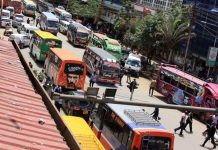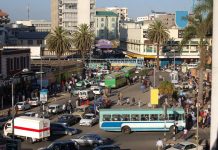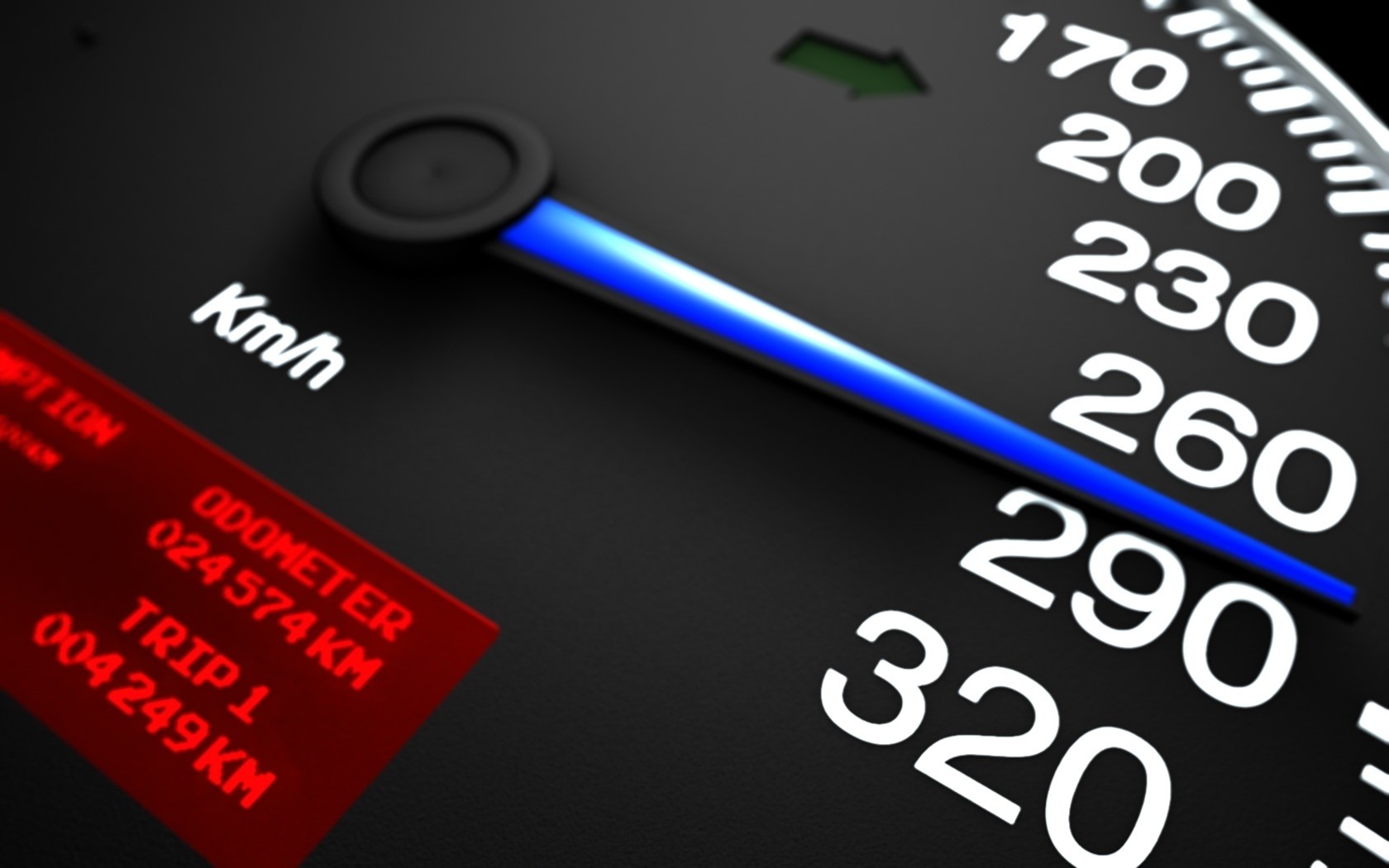How can Kenyan towns move large numbers of people efficiently, rapidly, cost-effectively and in relative comfort at all times?
This is the question that policymakers, transport and infrastructure planners should have been seeking answers to in the wake of the strike by matatus earlier this week.
It is a question that the government has failed to answer comprehensively and this has resulted in the gridlocks that have come to characterise virtually every major town in Kenya, from Mombasa to Meru, Nairobi, Nakuru, Eldoret and Kisumu.
The problem with expanding roads has been that Kenyans have been buying personal cars in increasing numbers in a private quest to solve a public transport problem.
MATATUS
Because matatus do not guarantee safety, have no regular schedules, no fixed prices and no set number of passengers, Kenyans who seek these conveniences in transport services have no other recourse but turn to personal cars, even if they have to incur debt to satisfy this need.
But if there is one lesson that the standard gauge railway should teach policymakers, urban planners and transport aficionados, it is that the market for regular, safe and reliable mass transit system remains untapped.
It is not for nothing that the SGR, despite the questions raised about its cost, has moved two million passengers in the short period it has been operating. Yet, this is just one line with no feeder system of inter-linked railway lines.
There is no reason why, for instance, counties like Nakuru, Uasin Gishu, Kisumu and adjoining areas, where the old railway passes, cannot come together and put a regular train to work, connecting these regions to each other and to Nairobi, where they can be linked to the SGR.
STABILISE FARES
Just doing this alone, say over the festive period when Kenyans travel en masse across the country, will not only serve to stabilise bus fares — a constant headache that Kenyans have to endure every time there is a holiday — it will also provide a large number of travellers with an option that is reliable and much safer than public service vehicles (PSVs).
In the past, for instance, it was possible for one to catch a train, say from Kenyatta University to Karatina and all the way to Nanyuki. Today, the only viable transport between Nairobi and the greater Mt Kenya region is the road, which narrows to a lane either way from the Kenol junction.
The result is that this road is clogged every weekend, a bad situation made worse by police road blocks and the occasional accident, such as the one involving a tanker that overturned atop the Sagana River Bridge, virtually cutting off that part of the country for an entire day.
FLIGHTS TO NYERI
Although a flight from Nairobi to Nyeri has been introduced, this will only address the top tier of the transport market, leaving the bottom of the pyramid at the mercy of the Nissan matatu since there are no buses that ply that part of the country besides Kensilver and Kenya Mpya.
And, whereas the former has a relatively sound safety record, the same cannot be said of the latter. It should come as a surprise that the Transport Ministry has only asked Kenya Railways to increase the frequency of commuter train services in the capital for the duration that matatus were on strike. What happens once the matatus are back on the road? Will that mean that the trains go back to their two trips a day schedule when clearly there is a market for regular services between the Central Business District and adjoining areas?
The problem with this thinking is that it assumes only regular workers need transport to take them to their jobs in the morning and back to their homes in the evening. This is the wrong model to premise a transport system on.
PUBLIC TRANSPORT
Public transport is for all people, including tourists, traders, idlers, fun-seekers, errand runners and all other people who, for one reason or another, need to move from one point to the next.
The large numbers of people who used the trains during the two days of the strike should, therefore, be a wake-up call to public transport planners to increase train services countrywide because the market exists as has been demonstrated by the SGR service between Nairobi and Mombasa.
Much as the idea of introducing a Bus Rapid Transport (BRT) is welcome, it will be fraught with challenges unless it is conceived as a supplementary idea to railway transport.
RESPECT BRT LANE
For one, the Interior ministry will need an inordinately large number of police officers to ensure that other road users respect the BRT lane. No public education has been conducted on how that lane is to be used.
Introducing a bus one morning will therefore not be the silver bullet that authorities think will solve urban transport challenges that all key towns face. Even with the line, all the other lanes will continue to look like endless trains, with one or two people in each cabin.
The question that authorities should be asking is: How do we make it both unnecessary and convenient for all who drive to work to drive themselves? Increasing parking fees, as the Nairobi City County has proposed in its budget, is unlikely to deter self-driving workers.
After all, increasing parking fees also increases the probability of one getting a parking slot. Cities like Athens have succeeded in this respect by pegging access to number plates. On some days, vehicles ending with an even number are allowed into the city centre.
On others, that privilege is given to those ending with an odd number. But this system succeeds for three reasons. The first is that Athens has a safe, clean, predictable and relatively cheap train service system that connects every part of the metropolis to the next.
The second is that it has both a bus and tram service that is as elaborate and punctual as the train. And third, it has metered taxis, which eliminates the need for haggling over fares. Here in Kenya, taxis charge prospective customers by the quality of their shirts or the lisp in their tongue.
FALLEN PREY
The problem with johnnies-come-lately, such as Uber and Taxify, is that they have fallen prey to fraudsters, sex predators and the traffic snarl-ups that make it difficult for them to be punctual. Because of this, a taxi that indicates it is two minutes away can take all of ten minutes to get to the prospective client, defeating the purpose of the app-based service.
Most European cities, such as London, have regular bus services that are as safe and clean as they are reliable. But they only compliment the train service, which is at the heart of mass transport. That is why it is possible for the public transport services to evacuate hundreds of thousands of football fans who throng stadiums. Here in Kenya, by contrast, a match between the “mashemeji” is enough to bring all transport to its knees.
This both discourages travelling for recreation while amplifying the country’s failure to manage large groups of people, be they workers, demonstrators, worshippers or football fans. Ten years ago, cities like Tokyo were evacuating 30 million people a day. And as I have pointed out in previous pieces, all those people got to their appointments on time.
Nairobi has between four million people by night and five by day, yet one has to wake up by 4am to make it for an 8am appointment. This is an inefficient use of labour resources. And what is more, they have to travel in mini-buses that are not only aggressively driven but also have it as their duty to pollute the environment. As a result, Nairobi looks dirtier than other cities, say in Europe or Asia which have more vehicles.
But because emissions of public vehicles are not taken seriously here, the pollution has even killed flowers by the roadsides and discoloured the walls over bridges and over-passes. In the same vein, the number of respiratory diseases in the routes used by these matatus remains very high, especially where there are schools and residential areas. No, let us not talk about noise pollution. Thank you.
With increased urbanisation, travelling to virtually any time in Kenya has become a nightmare, in large part because of the heavy traffic that clogs the arteries going into and out of the towns. It no longer matters which town you are travelling to, there will be traffic, all because those charged with the responsibility to plan for mass movement have left that job to matatu owners and now, increasingly, to motorcycle taxis that have also become a law unto themselves.
TRAIN SERVICE
An argument has been made that there is no public transport system in the world that has turned a profit. That argument is subject to debate. However, in places like Britain, the public rail operators, the equivalent of Kenya Railways, have leased out their tracks to private train service companies such as Virgin.
There is no reason why such a model should not be tried here in Kenya, even with the SGR. Were this to be done, it would fill a gap among travellers who are still dissatisfied with the service as it is and who yearn for higher levels of comfort or higher speeds or seek to travel outside the SGR train schedules.
And there is no reason why this service cannot be expanded westwards towards Kisumu, southwards towards Kajiado and beyond and northwards to Meru, Isiolo, Garissa and beyond. And if need be, counties can plug in to meet this need by their constituents as long as they are not bogged down by squabbles over which governor should build a railway station where.
SOURCE: nation.co.ke








![Top 20 Used Cars to Avoid Buying in Kenya – [PHOTOS]](../../../blog/wp-content/uploads/2013/11/top-used-unreliable-cars-to-avoid2-80x60.jpg)

![Top 20 Used Cars to Avoid Buying in Kenya – [PHOTOS]](../../../blog/wp-content/uploads/2013/11/top-used-unreliable-cars-to-avoid2-100x70.jpg)





